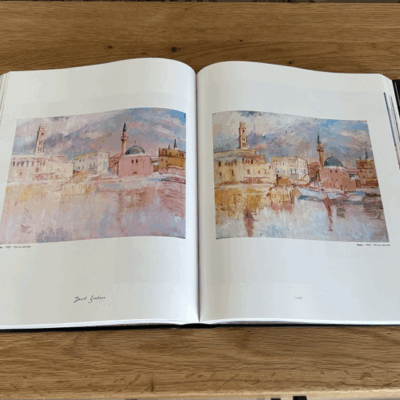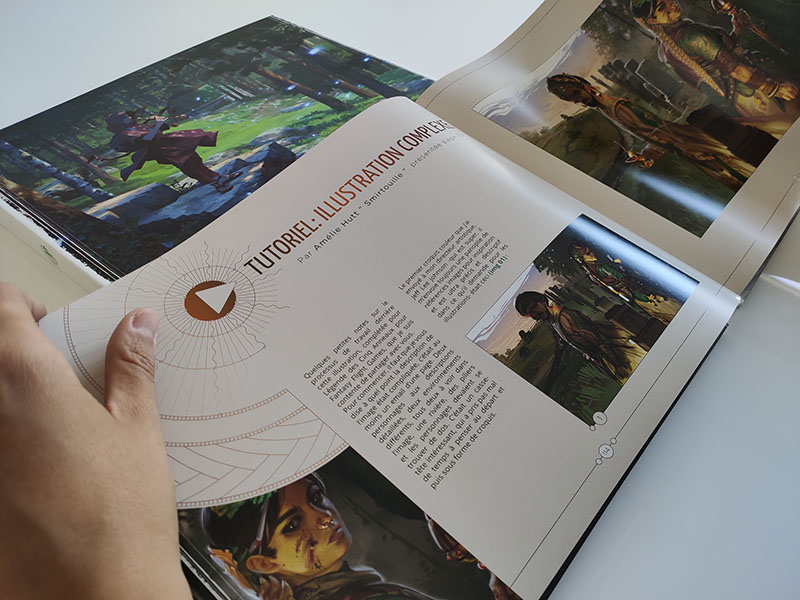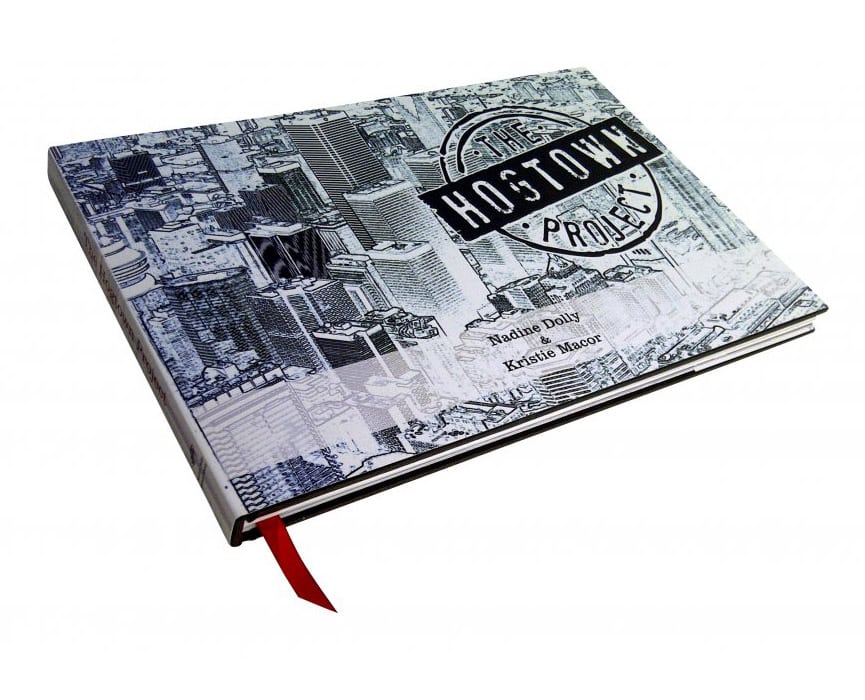All You Need to Understand About Binding Options for Your art book
Recognizing the Process Behind Premium Art Book Printing for Art Enthusiasts
When it involves premium art book printing, understanding the details of the process can boost your gratitude for the last item. You might not understand exactly how essential paper choice and ink choices are to the vibrancy of artwork. Each component plays a considerable duty in accomplishing the desired impact. As you discover the various parts of art book printing, you'll uncover insights that can transform your viewpoint on art preservation and presentation.
The Significance of Paper Option in Art Book Printing
When it comes to art book printing, the option of paper can make or damage the end product. You want your artwork to beam, and the appropriate paper enhances color vibrancy and detail. Take into consideration variables like weight, appearance, and finish; these aspects significantly affect exactly how viewers regard your work.
For example, a heavier stock communicates top quality and durability, while a textured finish can add depth to pictures. Smooth paper is superb for detailed reproductions, allowing fine lines and refined tones to show up crisp.
Do not neglect concerning the paper's brightness; a brighter sheet can assist colors pop, making your art much more distinctive. You'll additionally intend to assume concerning just how the paper engages with inks and whether it can take care of the printing process without warping or bleed-through. Inevitably, choosing the appropriate paper sets the stage for your art, guaranteeing it catches the audience's attention equally as you imagined.
Selecting the Right Inks for Dynamic Reproductions
Selecting the ideal inks is just as crucial as selecting quality paper to achieve vivid reproductions in your art book. When you're publishing art work, you want colors that pop and properly stand for the original item. Go with inks with a high pigment concentration; these have a tendency to create richer and extra saturated shades.
You might consider utilizing historical inks, which stand up to fading with time, ensuring your art book stays as striking as the day it was printed. If you're dealing with pictures or digitally created art, pigment-based inks can give a larger shade range, improving detail and deepness.
Don't neglect regarding the surface! Matte and shiny inks can dramatically alter the appearance of your art work, so assume regarding the look you're aiming to accomplish - art book. Ultimately, the appropriate ink choice complements your paper selection, creating a magnificent visual experience for your readers
The Duty of Shade Administration in Print Quality
Color administration plays an important duty in achieving high print high quality for your art book. It ensures that the shades you see on your display translate precisely to the printed web page. Without effective color administration, your vivid art work may appear boring or altered, threatening your imaginative vision.
Next, make use of color profiles customized for your printer and paper type. These accounts direct the printer in duplicating shades precisely, reducing disparities between digital and printed variations.
When you prepare your files, consider making use of a shade area like Adobe RGB or CMYK, depending on your printer's specifications. Always evidence your work, as well; an examination print can disclose any possible shade issues prior to the final run. By focusing on shade administration, you safeguard the stability of your art, ensuring your target market experiences it as you intended.

Recognizing Different Binding Techniques
Attaining the ideal search for your art book exceeds color management; binding strategies also play a substantial role in its overall discussion and toughness. You have numerous choices to assess, each with its very own distinct qualities.
If you're going for a professional feel, case binding provides a durable option with a difficult cover, ideal for showcasing your artwork. On the various other hand, excellent binding gives a flexible spinal column while maintaining costs down, making it a popular choice for softcover publications.
Spiral binding enables your art book to lay flat, which is terrific for showing photos without obstruction. On the other hand, saddle sewing is ideal for smaller booklets, giving a tidy coating without the bulk.
Inevitably, the binding technique you choose should mirror your creative vision and exactly how you want visitors to engage with your work. Make certain to consider these our website choices thoroughly to attain the most effective result for your project.
The Influence of Print Size and Format on Presentation
While the selection of print dimension and layout might appear second to content, they substantially affect exactly how your artwork is viewed. The dimensions of your prints can either boost or reduce the influence of your pieces. Larger prints can draw visitors in, permitting them to value complex information, while smaller sized formats might need even more intimate involvement.

Conservation Techniques for Lasting Art Books
To ensure your art books stand the test of time, it's vital to carry out efficient conservation techniques. Begin by keeping them in a trendy, dry environment, far from direct sunshine and moisture. This avoids fading and warping, keeping your web pages intact. Usage acid-free storage space boxes or safety sleeves to secure them from dirt and physical damage.
When handling your publications, constantly wash your hands or use cotton gloves to stay clear of oils and dust moving onto the web pages. Prevent bending or wrinkling the spinal columns; instead, utilize book sustains when presenting them.
For included defense, think about buying archival-quality products for any repair work or improvements. Routinely examine your collection for indicators of wear or damage, addressing issues promptly. By complying with these basic techniques, you can guarantee your art publications continue to be vivid and obtainable for years to find, protecting their elegance and worth for future generations.
Working together With Printers for Ideal Results
When you're ready to publish your art book, choosing the best printer is important to achieving your vision. Clear communication concerning your expectations and demands will certainly help guarantee that both you and the printer get on the very same page. Allow's check out how to make this collaboration as seamless and efficient as feasible.
Selecting the Right Printer

Efficient Interaction Strategies
Efficient interaction is crucial for transforming your art book vision right into reality, specifically when working together with printers. art book. Beginning by plainly describing your project's objectives, including layout aspects, favored products, and any type of particular printing methods. Don't wait to share your motivations and recommendations; this assists the printer recognize your visual
Set up normal check-ins to go over development and deal with any kind of concerns. Usage visuals, like mock-ups or samples, to convey your ideas better. Be open to responses, as printers frequently have important understandings that can enhance your project. Preserve a favorable connection by being considerate and appreciative of their knowledge. This partnership will ensure that your art book satisfies your expectations and shines in its final kind.
Regularly Asked Concerns
What Prevail Errors to Stay Clear Of in Art Book Printing?
When printing your art book, stay clear of common blunders like poor resolution pictures, incorrect shade profiles, and overlooking page layout. Don't fail to remember to check and confirm details to verify your final product fulfills your expectations.
Just How Does Digital Printing Differ From Conventional Printing Methods?
Digital printing utilizes electronic files to develop prints directly, allowing for quicker turnaround and personalization. On the other hand, traditional methods include physical plates, which can be taxing and less flexible for small runs or special layouts.
What Is the Typical Turnaround Time for Art Book Printing?
The normal turn-around time for art book printing varies, yet you can anticipate it to take anywhere from a couple of weeks to numerous months. Factors like complexity, quantity, and printing technique all affect this timeline.
Can I Publish a Minimal Version Art Book Economically?
You can publish a restricted edition art book economically by picking economical materials, enhancing print runs, and making use of digital printing options. Mindful planning and budgeting will certainly help you achieve top quality without spending too much.
What Are the Ecological Considerations in Art Book Printing?
When thinking about art book printing, you need to think of eco-friendly materials, lasting inks, and energy-efficient procedures (art book). Picking local printers look at this now can likewise decrease your carbon impact, making your project both beautiful and ecologically accountable